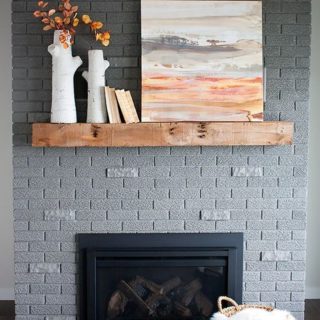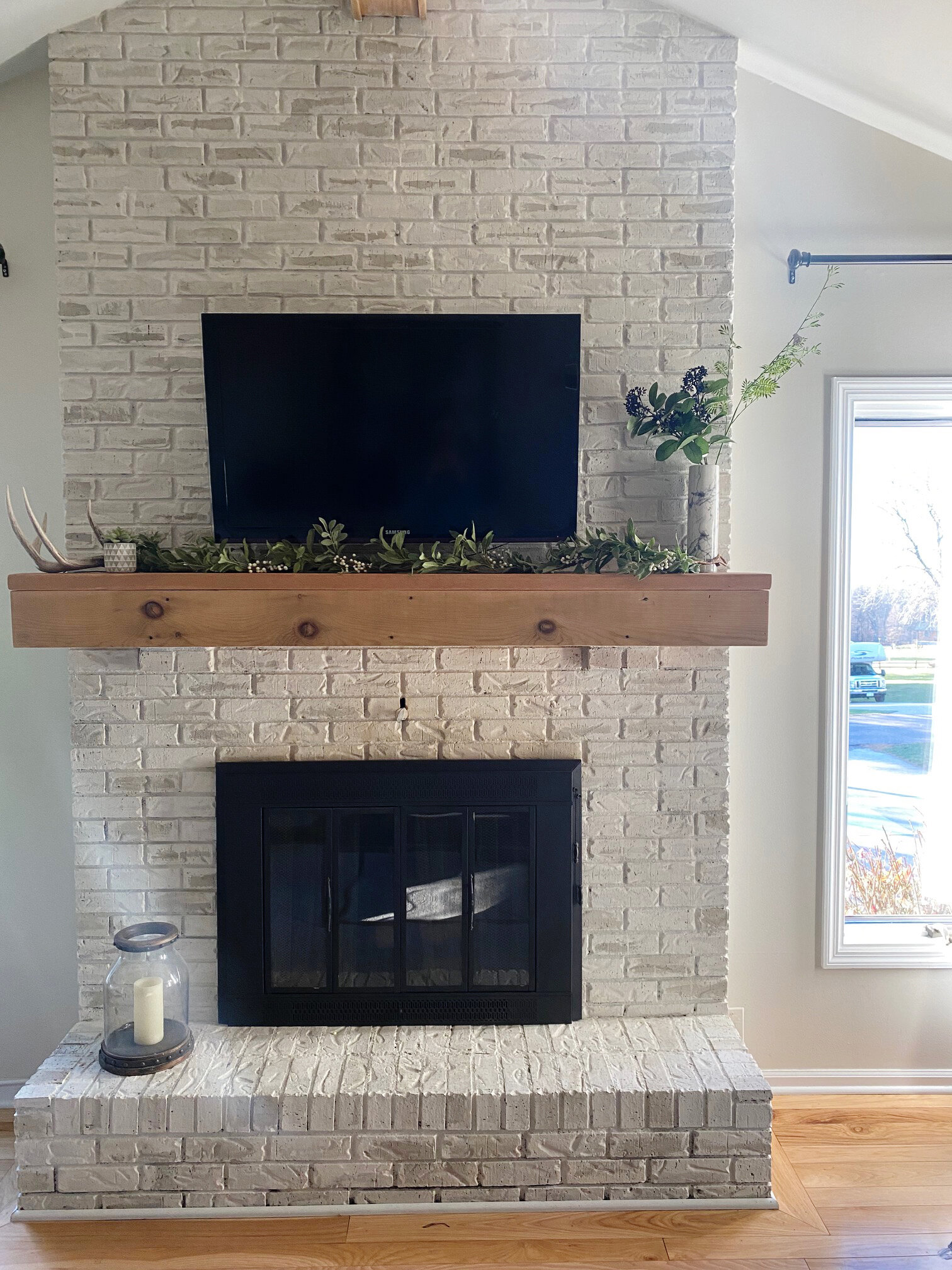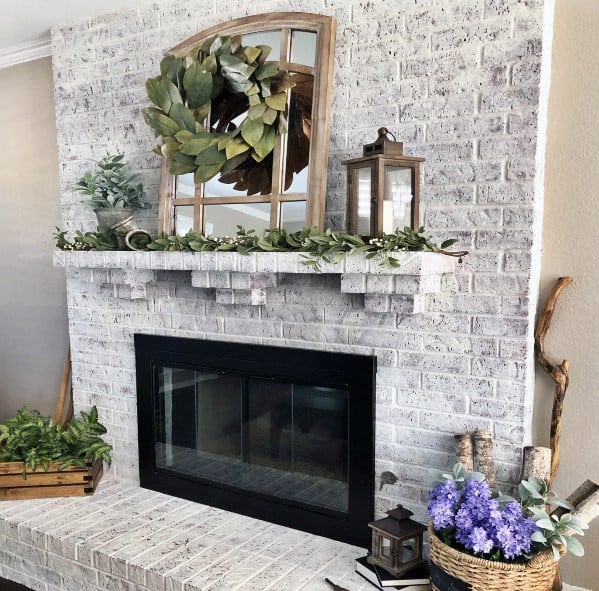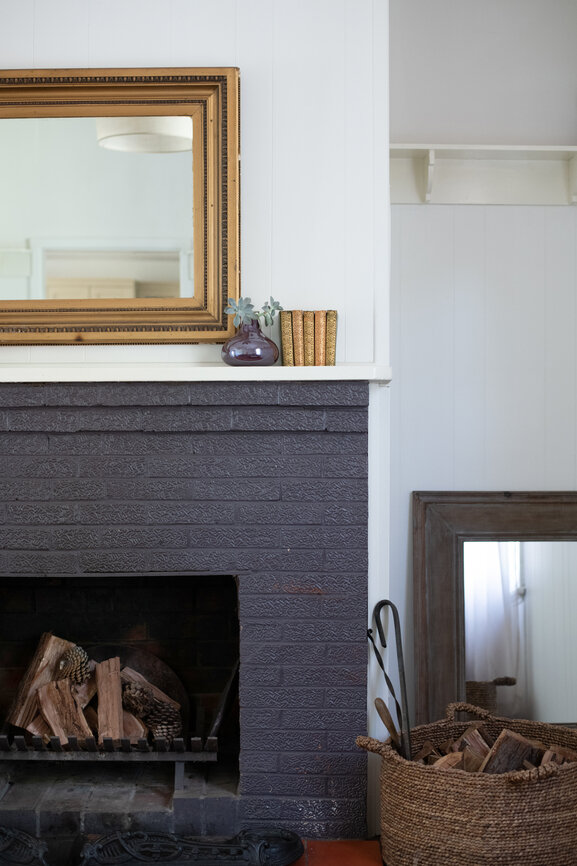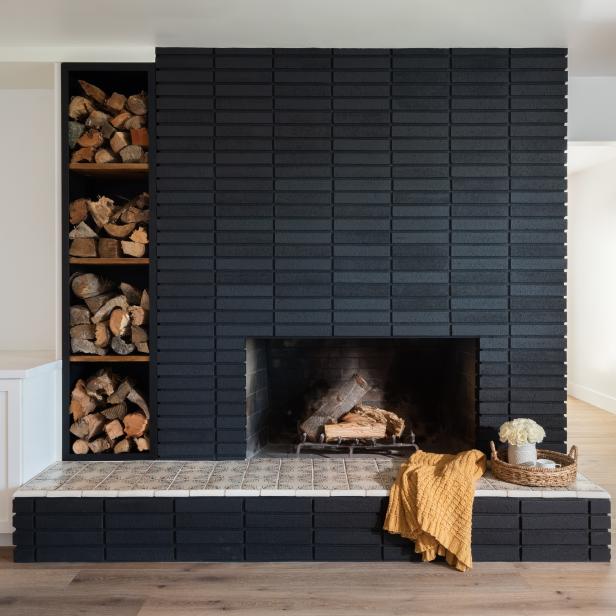Painting a brick fireplace gray transforms an outdated feature into a sophisticated focal point. This versatile approach maintains the brick’s texture while updating its appearance for contemporary interiors. Whether you prefer light dove gray or dramatic charcoal, a painted finish allows the architectural detail to shine without dominating the room. Below, we discuss several key considerations for achieving the perfect painted gray brick fireplace.
Choosing the Right Gray Paint for Your Brick
Selecting the perfect gray requires testing samples directly on your brick. I always recommend buying several small cans in different undertones—some grays lean blue, others brown or green. Natural light dramatically affects gray’s appearance; a color that looks neutral at noon may feel cold at night. For traditional homes, warm greige tones (like Benjamin Moore Revere Pewter) complement wood trim beautifully.
The brick’s original color influences the final result. Red brick underneath requires more primer coats and often ends up warmer than expected. White-washed brick takes gray paint more cleanly. I’ve found matte or eggshell finishes work best—they allow the brick texture to show while minimizing glare. Semi-gloss can look too shiny on porous brick surfaces. Always check if your chosen paint is rated for high-heat areas near fireboxes.
Consider your room’s existing elements when choosing gray. Cool grays pair well with stainless steel and marble, while warmer grays harmonize with brass and wood tones. In open floor plans, coordinate the fireplace gray with other painted surfaces for flow. My go-to is selecting a shade slightly lighter or darker than the wall color for subtle contrast.
Proper Preparation for Lasting Results
Prepping the brick properly makes all the difference in paint adhesion and longevity. Start by cleaning the surface thoroughly—I use trisodium phosphate (TSP) solution to remove decades of soot and grime. A stiff brush gets into mortar joints where dust accumulates. For painted brick, sanding glossy areas helps the new paint grip. Always repair cracked mortar before painting; I prefer latex-based mortar repair for its flexibility.
Priming is non-negotiable for the brick’s porous surface. Oil-based primers like Kilz Original block stains and prevent tannin bleed from red brick. Two thin coats work better than one thick one—the primer should fully saturate the brick’s texture. I often tint the primer gray to reduce the number of topcoats needed. Let primer cure fully (usually 24 hours) before painting.
Masking adjacent surfaces takes time but prevents messy edges. Use frog tape for clean lines where brick meets mantel or walls. For intricate brick patterns, I sometimes cut in edges with a brush before rolling larger areas. Remove outlet covers and clean surrounding floors—brick texture tends to spit paint droplets during application.

Paint Application Techniques for Brick
The right tools make painting brick far easier. A high-quality angled brush (2-3 inch) handles mortar joints and edges, while a thick-nap roller (3/4 inch) covers textured surfaces efficiently. I prefer microfiber rollers for brick—they hold more paint than foam and don’t leave bubbles. Work in manageable sections, maintaining a wet edge to prevent lap marks.
Brick absorbs paint unevenly, so multiple thin coats look better than one thick one. The first coat will appear patchy—this is normal. Let each coat dry completely (usually 2-4 hours) before recoating. I typically need three coats for full, even coverage on porous brick. Pay special attention to mortar joints; they often require extra brushing to fill all crevices.
For a slightly weathered look, try dry-brushing. After the base coat dries, lightly drag a barely-loaded brush over raised brick edges with a contrasting gray. This technique emphasizes texture beautifully. Another option is whitewashing with diluted gray paint for a semi-transparent finish that lets some brick color show through—ideal for those wanting a softer transformation.
Styling Your Painted Gray Fireplace
A gray fireplace becomes a versatile backdrop for various decor styles. In modern spaces, pair it with a sleek floating mantel in natural wood or black metal. For farmhouse appeal, layer a chunky reclaimed wood beam above the fireplace. I often style the mantel with simple black-and-white photography or a single large mirror to reflect light.
The surround offers styling opportunities too. Stacked firewood in a wrought iron holder adds rustic contrast against gray brick. Black iron fireplace tools pop dramatically against light gray. For holidays, a simple eucalyptus garland drapes beautifully across a gray brick mantel without competing. Consider painting built-in bookcases the same gray for a cohesive built-in look.
Art choices matter against a gray backdrop. I lean toward pieces with warm wood frames or gold accents to prevent the space from feeling cold. A colorful abstract painting can make the fireplace a true focal point. In minimalist spaces, leaving the mantel bare emphasizes the beautiful brick texture and painted finish.
Maintaining Your Painted Brick Fireplace
Proper care keeps your painted brick looking fresh for years. Dust regularly with a soft brush attachment to prevent buildup in textured areas. For soot marks near the firebox, use a magic eraser gently—too much pressure can wear the paint. I keep touch-up paint stored properly for quick fixes to chips or scratches.
Heat exposure requires consideration. While most modern paints withstand fireplace temperatures, direct flames can cause yellowing over time. Using a fireplace screen helps protect the painted surface. If your fireplace sees heavy use, consider heat-resistant paint specifically formulated for fireboxes. I’ve had good results with Rust-Oleum’s high-heat products.
Seasonal humidity affects painted brick differently than drywall. In damp climates, watch for bubbling paint—a sign that moisture is trapped beneath. Proper ventilation and dehumidifiers help prevent this. Every few years, inspect for areas needing repainting; high-traffic zones like hearths may need refreshing first. A well-maintained painted brick fireplace can last a decade before needing major attention.
Alternative Gray Finish Options
For those hesitant to commit to full paint, limewash offers a semi-opaque gray option. This traditional technique lets some brick texture show through while muting the original color. I mix powdered lime with water and pigment, applying it with a masonry brush for organic variation. The result feels more breathable than paint—ideal for historic homes.
German smear technique creates a rustic mortar-washed look. After applying gray paint, I partially wipe it off while wet with a damp cloth, leaving residue in the mortar joints. This achieves an aged appearance reminiscent of European cottages. It works particularly well with red brick, creating dimension without full coverage.
Staining brick with gray masonry stain preserves more texture than paint. These penetrating colors don’t form a surface film, allowing the brick to breathe. I recommend testing stains on inconspicuous areas—they react unpredictably with different brick types. While less common than painting, staining offers unique results for those wanting a natural feel.
Will painting my brick fireplace decrease home value?
Not necessarily—it depends on your local market and execution quality. In many contemporary homes, a well-painted gray fireplace actually increases appeal by modernizing the space. I’ve seen painted brick help dated 1970s fireplaces sell homes faster. That said, in historic districts or craftsman-style homes, original brick might hold more value. The key is professional-looking results; sloppy paint jobs hurt value regardless of color.
How do I clean a painted brick fireplace?
Regular dusting with a soft brush or microfiber cloth prevents buildup on the textured surface. For marks, use a mild soap solution (like dish soap and water) with a soft sponge—avoid abrasive scrubbers. Magic Erasers work carefully on stubborn spots, but test first in an inconspicuous area. I recommend against harsh chemicals or pressure washers, which can damage the paint film over time.
Can I paint over already painted brick?
Yes, but proper prep is crucial. Clean thoroughly to remove grease or soot, then lightly sand to rough up the glossy surface. I always use a bonding primer like Stix or Kilz Adhesion before repainting—it helps the new coat stick securely. Peeling or chalking paint should be scraped and patched first. Two fresh coats usually refresh existing painted brick beautifully.
What’s the difference between painting and whitewashing brick?
Painting provides full, opaque coverage that completely transforms the brick color. Whitewashing (or gray-washing) uses diluted paint for a semi-transparent finish that lets some brick texture and color show through. I recommend whitewashing for those wanting a softer, more rustic look or who may want to remove it later. Full paint offers a more dramatic transformation and better durability.
How long does painted brick last before needing repainting?
With proper prep and quality paint, a brick fireplace can last 7-10 years before needing touch-ups. High-traffic areas like hearths may need repainting sooner. Exterior brick paint jobs typically last 5-7 years due to weather exposure. I’ve seen interiors last over 15 years with minimal maintenance in low-use areas. The original brick condition and paint quality greatly affect longevity.
Should I paint the mortar the same color as the brick?
It depends on the look you want. Painting brick and mortar the same gray creates a unified, modern appearance. For more traditional character, I sometimes paint the brick one shade and use a slightly lighter/darker gray for mortar (a technique called “tuck pointing”). Another option is using a stiff brush to remove excess paint from mortar joints while wet, allowing some natural mortar color to show through subtly.
Beautiful Ideas for Painting Interior Brick Fireplaces
The Pros + Const of Painted Brick
Fireplace Makeover: Grey Paint – The Happy Farmhouse
Gorgeous Painted Brick Fireplace Ideas
Related Posts:




